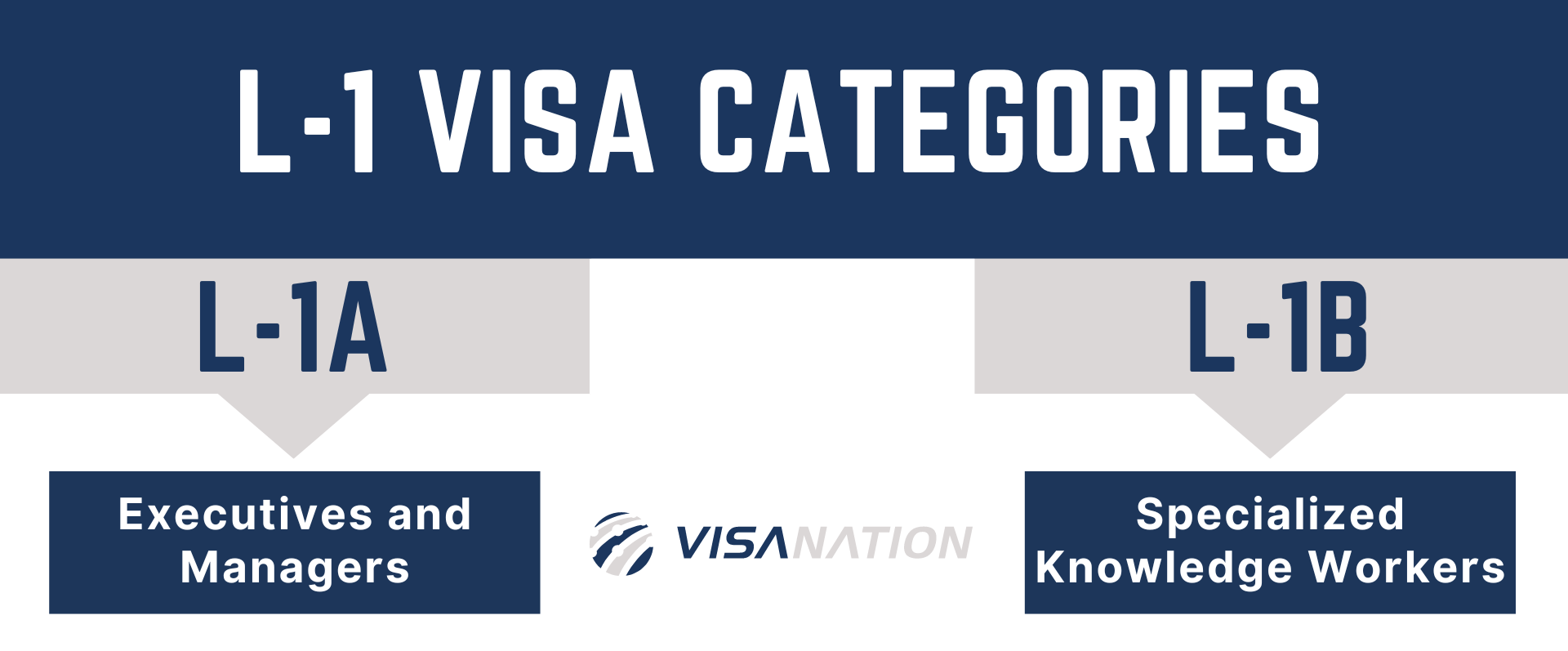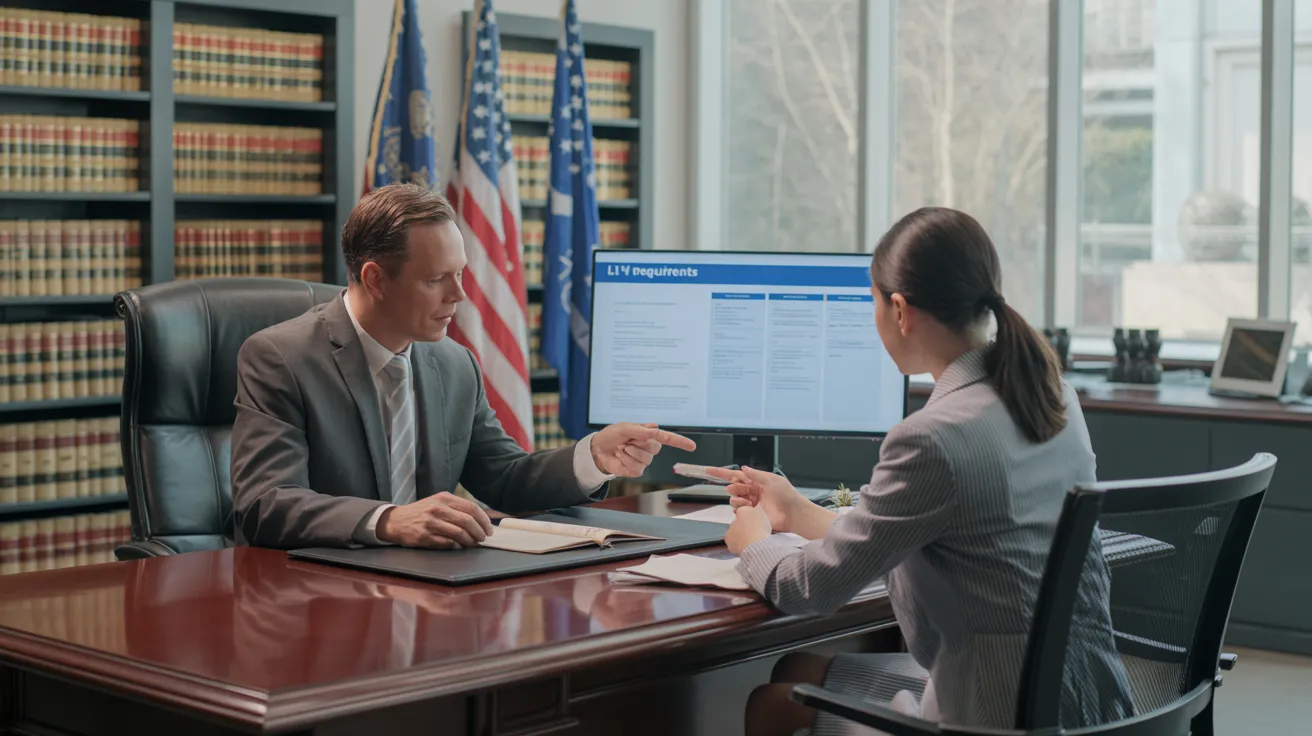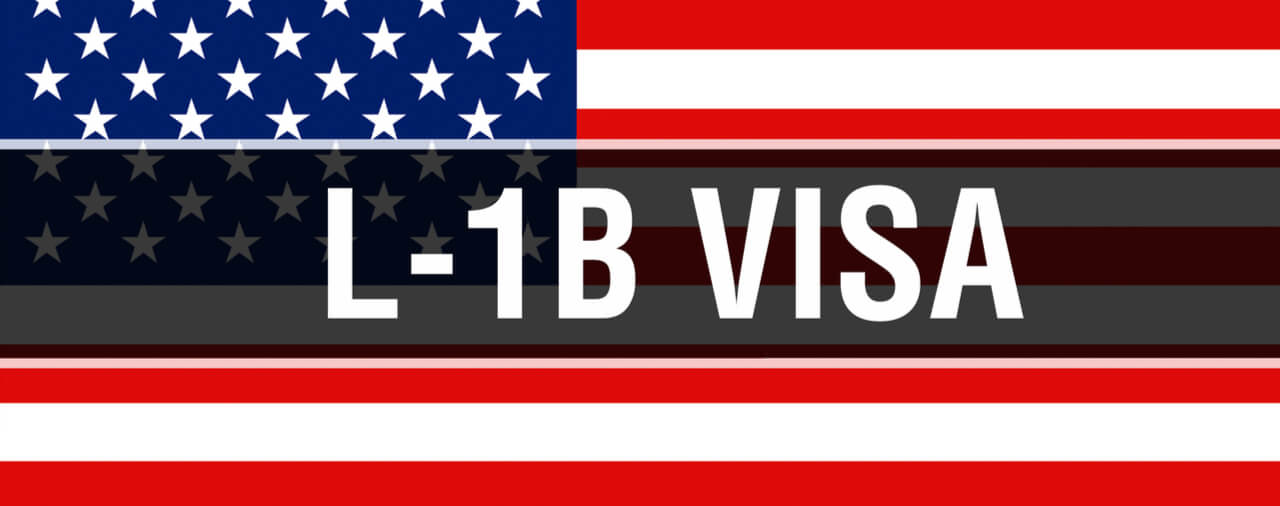Unlocking Opportunities: A Comprehensive Guide to the L1 Visa Process
The L1 visa process provides an important pathway for multinational firms seeking to move key employees across boundaries. Recognizing the nuances of qualification requirements, the distinctions in between L-1A and L-1B visas, and the ins and outs of the application process can substantially influence a candidate's success. Nonetheless, steering this complicated landscape is not without its challenges, and cautious interest to paperwork and employer sponsorship is essential. As we check out the key parts of this procedure, the methods for getting over possible challenges will certainly end up being obvious, revealing exactly how notified prep work can open a world of chances.
Understanding the L1 Visa
Comprehending the L1 visa involves acknowledging its relevance as a crucial tool for international firms seeking to transfer competent workers between global offices. This non-immigrant visa group promotes the motion of execs, supervisors, and specialized understanding employees to the United States, thus enabling companies to maintain functional connection and harness worldwide skill successfully. The L1 visa is split into two key categories: L-1A for managers and executives, and L-1B for staff members having specialized knowledge.The L1 visa offers a vital duty in improving a business's one-upmanship in the worldwide marketplace - L1 Visa. By permitting firms to relocate their key workers, services can assure that essential tasks are taken care of by qualified people who are currently knowledgeable about the business's society and functional processes. This interior transfer system not only promotes understanding sharing but additionally advertises development and cooperation throughout borders.Moreover, the L1 visa is commonly preferred for its relatively simple application procedure contrasted to various other visa classifications, as it permits double intent, permitting owners to go after permanent residency while on a temporary copyright. This attribute makes the L1 visa specifically appealing for both companies and workers, as it improves the path for skilled professionals to establish long-lasting residency in the USA
Qualification Requirements
Qualification for the L1 visa rests on numerous essential criteria that guarantee both the staff member and the employer satisfy details certifications. This non-immigrant visa is developed for international companies to move employees from international offices to united state counterparts.Firstly, the company has to be a certifying company, which includes a moms and dad business, branch, associate, or subsidiary of a united state service. The company must have been doing organization for a minimum of one year both in the united state and abroad. This ensures that the business has enough functional security and a genuine presence.Secondly, the staff member must hold a supervisory, executive, or specialized understanding placement. For L1A visas, the candidate has to show supervisory or executive qualifications, while L1B visas concentrate on specialized knowledge pertaining to the organization's items, solutions, or procedures. Additionally, the worker must have benefited the foreign entity for at the very least one continuous year within the last 3 years prior to their application.Lastly, the employee's function in the united state should align with their previous position, making certain that their abilities and proficiency are leveraged for the firm's advantage.
Kinds of L1 Visas
The L1 visa classification consists of 2 primary types designed to facilitate the transfer of employees within international business: the L1A visa for supervisors and executives, and the L1B visa for workers with specialized understanding. Each type serves distinct functions and has details qualification criteria.The L1A visa is tailored for people who hold managerial or executive positions within a business. This visa allows top-level workers to transfer to a united state branch, subsidiary, or associate of the very same organization. Candidates for the L1A visa should demonstrate that they have been utilized in a managerial or executive ability for a minimum of one continuous year within the previous 3 years before their application. Furthermore, this visa uses a longer duration of keep, originally provided for 3 years, with the opportunity of expansions for as much as seven years.In contrast, the L1B visa is planned for professionals with specialized expertise relevant to the business's products, solutions, or procedures. To qualify, applicants need to show that their proficiency is crucial to the organization which they have actually helped a minimum of one constant year within the last 3 years in a role that needed this specialized knowledge. The L1B visa is originally approved for 3 years, with expansions readily available for up to 5 years.Both visa types are necessary for companies seeking to boost their international procedures by leveraging competent employees, consequently advertising advancement and effectiveness within the U.S. market.
Application Process
Steering with the L1 copyright process includes several crucial actions that have to be carefully followed to ensure an effective result. The process begins with the U.S. company, who have to initially develop eligibility by showing a certifying relationship with the international entity and validating that the staff member fulfills the certain requirements for the L1 visa category being sought.Once eligibility is verified, the company launches the procedure by submitting Kind I-129, the Request for a Nonimmigrant Employee, with the U.S. Citizenship and Immigration Solutions (USCIS) This kind should be come with by a thorough summary of the work duties to be done, the organizational framework of both the united state and international entities, and the employee's qualifications. It's essential to validate that all details is accurate and total, as noninclusions or inaccuracies can bring about hold-ups or denials.Upon approval of the I-129 request, the next action entails the employee looking for the L1 visa at an U.S. consular office or consular office in their home nation. This phase calls for the completion of Form DS-160, the Online Nonimmigrant copyright, and scheduling a meeting. Throughout the meeting, the candidate has to provide evidence sustaining their qualifications and the employer's petition.After the visa is granted, the staff member can get in the United States to operate in the designated duty. Overall, mindful prep work and adherence to every step of the application procedure are necessary for an effective L1 visa outcome.
Called for Documents

Crucial Forms Required
Maneuvering the L1 Visa process calls for careful interest to the essential kinds and documentation essential for an effective application. The main form required is the Type I-129, Request for a Nonimmigrant Employee, which have to be completed and submitted by the U.S. employer. This type describes the details of the work offer and the credentials of the worker looking for the L1 Visa.Alongside Type I-129, the candidate will certainly need to complete Type I-539 if accompanying family members are also requesting visas. In addition, the employer needs to offer evidence of the qualifying partnership in between the U.S. entity and the international entity, frequently demanding the submission of company papers such as posts of incorporation or monetary statements.Moreover, it is necessary to consist of the L Category Supplement to Type I-129, which defines the sort of L Visa being requested-- either L-1A for managers and execs or L-1B for employees with specialized understanding. Ultimately, applicants ought to assure that all types are signed and dated appropriately, as insufficient submissions can bring about delays or denials. Effectively assembling these essential forms lays the structure for a smoother L1 copyright procedure.

Sustaining Evidence Requirements
Sustaining documents is vital for a successful L1 copyright, as it substantiates the claims made in the request. Candidates have to provide a range of papers to show qualification for the visa, which is categorized into 2 main types: evidence of the qualifying partnership in between the united state and foreign entities and proof of the candidate's qualifications.To develop the partnership, candidates must send paperwork such as business organizational charts, monetary statements, and evidence of possession. These papers confirm that the foreign firm has a qualifying partnership with the U.S. company, whether as a parent firm, subsidiary, branch, or affiliate.For the candidate's qualifications, crucial records consist of an in-depth employment letter from the international employer, laying out the applicant's work title, duties, and period of work. Additionally, academic qualifications, such as degrees and diplomas, need to be provided to verify the applicant's competence in the pertinent area.
Company Sponsorship Records

Common Obstacles
Steering the L1 visa procedure presents a number of common challenges that applicants must be aware of. Secret problems commonly consist of rigorous documentation demands, prospective hold-ups in handling times, and the necessity for stringent lawful compliance. Comprehending these challenges can assist applicants much better prepare and alleviate risks during their copyright journey.
Documents Requirements
The L1 copyright procedure typically offers substantial challenges associated with documentation requirements. Candidates must offer extensive documents to establish eligibility, which can cause complication and possible hold-ups. Secret papers consist of evidence of a certifying partnership in between the united state and international company, proof of the applicant's employment background, and in-depth information about the task function in the U.S.One typical challenge is collecting sufficient evidence to demonstrate the nature of the qualifying connection. Firms commonly struggle to present clear organizational graphes or financial declarations that illustrate the connection between the entities. Furthermore, ensuring that letters of assistance from companies precisely show the candidate's work responsibilities and certifications is vital, as unclear descriptions can lead to denials.Another issue emerges from the demand for detailed work summaries that align with the L1 visa categories. Applicants need to express not just their present role however likewise their managerial or specific expertise responsibilities plainly. This requires a complete understanding of both the candidate's placement and the regulative language utilized in L1 applications.
Handling Dead Time
Experiencing hold-ups in processing times is a common difficulty dealt with by L1 visa applicants, usually resulting in irritation and unpredictability. Several aspects add to these hold-ups, consisting of high application quantities, boosted analysis of applications, and administrative backlogs within the U.S. Citizenship and Migration Provider (USCIS) Candidates might find that handling times can vary significantly depending upon the solution facility managing their application, as each center has its own work and efficiency degrees. In addition, the complexity of the candidate's instance, such as the demand for substantial paperwork or explanation, can further expand wait times.In some instances, issues associated with the candidate's existing migration status or previous visa history might additionally cause additional hold-ups, as USCIS might call for additional evaluation or information. It is essential for candidates to stay proactive during this period, keeping open interaction with their companies and lawful L1 Visa Requirements agents to deal with any kind of potential problems promptly.Understanding these processing time obstacles can aid L1 visa candidates prepare for possible hold-ups and mitigate the effect on their change and occupation strategies. Perseverance and diligence are essential virtues in navigating this complex process.
Legal Compliance Issues
Lots of L1 visa applicants come across lawful conformity issues that can complicate their trip toward getting the visa. Recognizing and sticking to the certain guidelines established by the U.S. Citizenship and Migration Solutions (USCIS) is important. Common obstacles include showing the qualifying connection between the foreign and U.S. employers, along with verifying that the applicant possesses the requisite specialized understanding or supervisory capacity.Additionally, applicants have to supply thorough documentation detailing their task tasks, company structure, and economic viability of the united state entity. Poor or imprecise paperwork can lead to delays or perhaps rejections. Employers should also ensure that they follow labor laws, consisting of wage and functioning problem criteria, which can influence visa eligibility.Another typical problem involves keeping conformity with the regards to the visa as soon as given. Adjustments in work condition, task obligations, or firm structure can demand modifications to the visa, which if not dealt with immediately can bring about lawful problems. Therefore, remaining informed about conformity demands and looking for legal advice when necessary is important to navigate the intricacies of the L1 visa procedure effectively.
Tips for Success
Success in the L1 copyright procedure commonly rests on thorough prep work and interest to information. To enhance your possibilities of approval, start by extensively comprehending the qualification needs for both the L1A and L1B visa categories. Evaluate whether your placement at the business certifies as supervisory, executive, or specialized understanding, as this classification especially affects your application.Next, gather considerable documents that validates your claims. This includes business charts, in-depth task descriptions, and evidence of the company's operational structure. Clear and concise evidence of the certifying relationship between the united state entity and the international entity is essential. Verify that all documents are arranged rationally and presented in an expert fashion, as this shows your dedication and seriousness concerning the application.Engage the solutions of a skilled migration attorney that concentrates on L1 visas. Their proficiency can prove vital, leading you via complicated laws and assuring that all paperwork follows current regulations. In addition, plan for the meeting by practicing response to typical concerns and being ready to review your duty and payments to the company in deepness.
Regularly Asked Concerns
Can Household Members Come With the L1 Visa Holder?
Yes, family participants of L1 visa owners, consisting of partners and unmarried children under 21, can come with the key visa holder. They may also get L2 visas, which allow them to live in the USA.
How Much Time Can I Stay on an L1 Visa?
The L1 visa allows first keeps of up to three years, with the opportunity of extension. L1A visa owners might stay for a maximum of 7 years, while L1B visa holders can remain for 5 years.
Can L1 Visa Holders Make An Application For a copyright?
Yes, L1 visa holders can look for a copyright. L1 Visa Requirements. They might go after permanent residency through employment-based groups, normally needing sponsorship from their employer, supplied they satisfy the required credentials and paperwork demands
What Occurs if My L1 copyright Is Rejected?
If your L1 copyright is denied, you may obtain a notification describing the factors for rejection. You can look for to appeal the choice, reapply, or explore alternative visa choices based on your scenarios.
Exist Any Type Of Traveling Constraints With an L1 Visa?
An L1 visa usually enables for global travel; however, re-entry to the united state is contingent upon preserving legitimate status. Tourists need to ensure conformity with visa problems to avoid issues upon return
Conclusion
